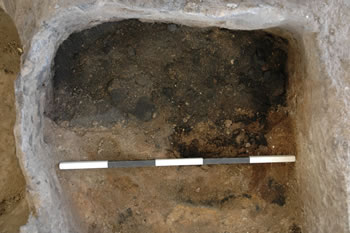MACRO-BOTANICAL REMAINS
Amy Bogaard, Mike Charles, Müge Ergun, Kim Ng, Marek Polcyn & Nicola Stone
The team processed 373 samples – a significant increase from last year, due largely to modifications in the excavation system (i.e. we now receive a 30 litre flotation sample from all contexts unless they are of a ‘sterile’ type). The samples break down by area as shown in Table 1. We carried out level 1 assessment (a quantitative assessment of major categories of crop and wild plant remains) on all samples from the 4040 area, the South area (including South) and the new IST area. (Level 1 assessment was not carried out for TP samples, since Marek Polcyn will export and sort all of the samples in Poland; TP samples designated as priorities in the field, however, received level 2 assessment).
Area |
No. samples |
Priority samples |
40x40 |
178 |
11 |
Istanbul |
24 |
0 |
South |
71 |
4 |
Team Poznan |
100 |
7 |
Total |
373 |
22 |
A total of 22 samples were prioritised for archaeobotanical feedback during the field season and so received level 2 assessment. Most of these were either poor in archaeobotanical remains or were rich in the usual ‘waste’ components (e.g. glume wheat chaff, sedge seeds and tuber). Several of the priority samples, however, and a significant number of other units were of a very different nature and these are described briefly below.
‘Stored food’ deposits from the 4040 Area
Excavations in the 4040 Area revealed a burnt building (Building 52). At the north end of the building, a small room (Space 93) was excavated that contained concentrations of charred plant remains. These concentrations resemble stored plant food of various kinds: cereal grain (naked barley, einkorn, emmer), peas, tiny crucifer seeds and almonds (kernels still in the shell). The contrast with the usual ‘waste’ deposits is very clear:
-seed concentrations occur within or next to three to four bins in a small (storage?) room (see Figures 16 &17)
-these concentrations often contain one predominant species; some concentrations include fused lumps of charred seeds, including examples consisting of naked barley and crucifer seeds, indicating that ‘caches’ of seeds were charred together
-sedge seeds, tubers and chaff are mostly absent; there is no evidence that Scirpus seeds or tubers were stored as food, implying that these tend to enter the archaeobotanical record by other routes (e.g. dung fuel)
-the associated wild seed assemblage (aside from concentrations of oil-rich crucifer seeds, e.g. Descurainia-type or Flixweed) overlaps with, but is distinct from, the usual wild seed flora found in ‘rubbish’ depostis. We hope to be able to gain an unusually clear view in these deposits of the arable weed flora, which will yield information on the nature of crop husbandry practices

Figure 32. In situ cruciferae seeds (11956) in Bin F.2005 from Building 52, 4040 Area. |
The precise nature of the contexts rich in plant ‘foods’ from Space 93 – including one bin containing over 30 litres of crucifer seeds – is still being discussed (Figure 32), as is the issue of accidental versus deliberate burning of the building. It is clear, however, that we will have the opportunity to explore a full spectrum of archaeobotanical deposition in the 4040 Area, ranging from stored food to routinely deposited ‘rubbish’, and the contrast between the two will be instructive. Extensive remains of stored plant food have not been uncovered at the site since Mellaart’s excavations. Recent re-analysis of the Helbaek material by Fairbairn et al. will further enhance a full appraisal of wild and cultivated food, crop husbandry practices, animal feeding, dung fuel and so on.
In addition to detailed scanning and some sorting of rich units from Space 93, we also returned to promising samples from the 4040 Area processed in 2004. None of these 2004 samples (including other burnt room fills) appears to represent stored food preserved in situ, but they also diverge from the usual ‘midden rubbish’. Identification of some unusually grain-rich samples from 2004 confirmed the common presence of two-grained einkorn, a cereal type previously unreported from the site. This finding further underlines the diversity and significance of glume wheats, the chaff of which is among the most ubiquitous charred plant components at the site.